After it rocketed higher last year, the United States’ official unemployment rate has fallen to 6.3 percent. But top economic officials are increasingly citing a different figure, one that puts the jobless rate at a far higher 10 percent.
The higher figure includes people who have stopped looking for work, and the disparity between the official rate and the expanded statistic underlines the unusual nature of the pandemic shock and reinforces the idea that the economy remains far from a full recovery.
The reality that labor market weakness lingers, a year into the pandemic, could come up again as Jerome H. Powell, the Federal Reserve chair, testifies before Congress starting on Tuesday. Mr. Powell is set to speak before the Senate Banking Committee at 10 a.m. Tuesday, then before the House Financial Services Committee on Wednesday.
The Bureau of Labor Statistics tallies how many Americans are looking for work or are on temporary layoff midway through each month. That number, taken as a share of the civilian labor force, is reported as the official unemployment rate.
But economists have long worried that by relying on the headline rate, they ignore people they shouldn’t, including would-be employees who are not actively applying for jobs because they are discouraged or because they are waiting for the right opportunity.
Now, key policymakers are all but ditching the headline statistic, rather than just playing down its comprehensiveness. In an alternate unemployment figure, they’re adding back people who have left the job market since last February, along with those who are misclassified in the official report.
“We have an unemployment rate that, if properly measured in some sense, is really close to 10 percent,” Treasury Secretary Janet L. Yellen said on CNBC last week. And a week earlier, Mr. Powell cited a similar figure in a speech about lingering labor market damage.
“Published unemployment rates during Covid have dramatically understated the deterioration in the labor market,” Mr. Powell said recently. People dropped out of jobs rapidly when the economy closed, and with many restaurants, bars and hotels shut, there is nowhere for many workers who are trained in service work to apply.
Mr. Powell will be testifying as Democrats look to pass $1.9 trillion in new economic relief, an effort that has raised concerns in some quarters about the potential for higher inflation. Mr. Powell has said he and his colleagues do not expect inflation to move much higher persistently, and has typically pushed for additional government support to help the economy through the pandemic.
Rates on longer-term government bonds — which serve as benchmarks for things as varied as mortgages and credit-card debt — have been grinding higher and investors will also be watching carefully for any hints at how the Fed is interpreting that increase.
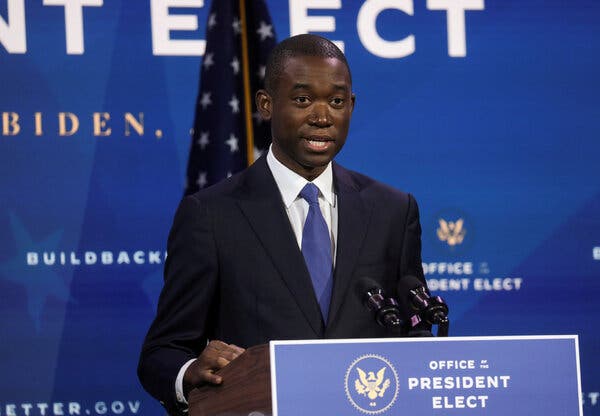
Wally Adeyemo, President Biden’s nominee for deputy Treasury Secretary, plans to emphasize the importance of rebuilding the United States’ alliances to combat China’s unfair trade practices and halt foreign interference in the country’s democratic institutions at his confirmation hearing on Tuesday, according to a copy of his prepared remarks, which were reviewed by The New York Times.
His remarks highlight the importance that the Biden administration is placing on multilateralism as it seeks to undo many of the economic policies put in place by former President Donald J. Trump.
Mr. Adeyemo will tell members of the Senate Finance Committee that Treasury Secretary Janet L. Yellen has asked him to focus on national security matters at the department. If confirmed, he will be a pivotal player in the country’s economic diplomacy efforts.
“We must reclaim America’s credibility as a global leader, advocating for economic fairness and democratic values,” Mr. Adeyemo will say.
Mr. Adeyemo is expected to be introduced at the hearing by Senator Elizabeth Warren, the progressive Democrat from Massachusetts. Ms. Warren, who established the Consumer Financial Protection Bureau before joining the Senate, worked with Mr. Adeyemo, who served as her first chief of staff.
Mr. Adeyemo will discuss the nexus between economic and national security, arguing that “Made in America” policies will make the country more competitive around the world. If confirmed, he is expected to conduct a broad review of Treasury’s sanctions program, which the Trump administration used aggressively, but often haphazardly, against Iran, North Korea, Venezuela and other countries.
“Treasury’s tools must play a role in responding to authoritarian governments that seek to subvert our democratic institutions; combating unfair economic practices in China and elsewhere; and detecting and eliminating terrorist organizations that seek to do us harm,” Mr. Adeyemo, a former Obama administration official, will say.
Born in Nigeria, Mr. Adeyemo emigrated with his parents to the United States when he was a baby and settled in Southern California outside Los Angeles. At the hearing, he will also talk about his working-class upbringing and the need to ensure that low-income communities and communities of color, which have been hit hardest by the pandemic, receive relief.
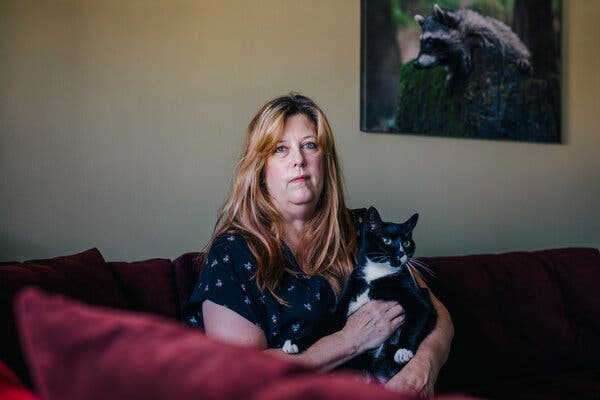
Nearly a month into the second run of the Paycheck Protection Program, $126 billion in emergency aid has been distributed by banks, which make the government-backed loans, to nearly 1.7 million small businesses.
But a thicket of errors and technology glitches has slowed the relief effort and vexed borrowers and lenders alike, Stacy Cowley reports for The New York Times.
Some are run-of-the-mill challenges magnified by the immense demand for loans, which has overwhelmed customer service representatives. But many stem from new data checks added by the Small Business Administration to combat fraud and eliminate unqualified applicants.
Instead of approving applications from banks immediately, the S.B.A. has held them for a day or two to verify some of the information. That has caused — or exposed — a cascade of problems. Formatting applications in ways that will pass the agency’s automated vetting has been a challenge for some lenders, and many have had to revise their technology systems almost daily to keep up with adjustments to the agency’s system. False red flags, which can require time-consuming human intervention to fix, remain a persistent problem.
Numerated, a technology company that processes loans for more than 100 lenders, still has around 10 percent of its applications snarled in error codes, down from a peak of more than 25 percent, said Dan O’Malley, the company’s chief executive.
Nearly 5 percent of the 5.2 million loans made last year had “anomalies,” the agency revealed last month, ranging from minor mistakes like typos to major ones like ineligibility. Even tiny mistakes can spiral into bureaucratic disasters.
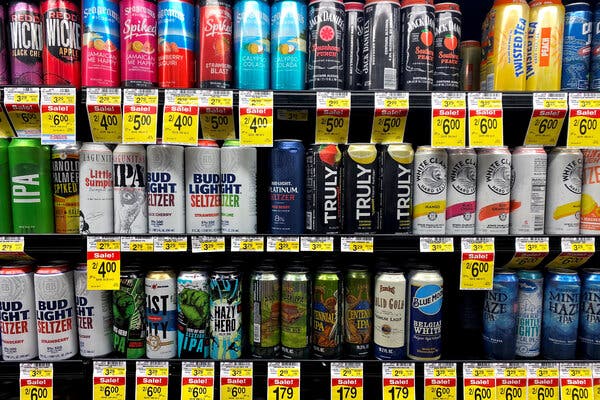
The company that makes the aluminum cans used by LaCroix, White Claw and other beverage giants is spinning off that business in a deal that values the new company at $8.5 billion, according to several people with knowledge of the plan.
The deal by Ardagh Group, which is based in Luxembourg, would be in the form of a merger with a special-purpose acquisition vehicle, or SPAC, backed by an affiliate of the Gores Group, the California private equity firm. It could be announced as soon as Tuesday, said the people, who spoke on the condition that they not be named because the negotiations are confidential.
It is a bet on the continued growth of the can business, as companies increasingly weigh the environmental consequences of their products. Nestlé announced the sale of its water business for $4.3 billion this month, in part a move to shift away from water packaged in plastic. Aluminum cans are far easier to recycle than plastic bottles.
The Gores SPAC, named Gores Holdings V, is the seventh such deal the group has done.
Ardagh will retain a roughly 80 percent stake in the company after the deal. Investors are contributing a $600 million private placement, while Gores is putting in $525 million in cash. The new company, Ardagh Metal Packaging, will issue $2.65 billion of new debt.
Ardagh generates more half its roughly $7 billion in annual sales from making cans for beverage companies. This past year, sales by the unit grew 2 percent, fueled by beverage sales and environmental awareness, while earnings before interest tax depreciation and amortization grew 8 percent. Ardagh will keep its glass packaging business.
For beverage companies, cans have become an increasingly important tool for branding, providing colorful and sleek packaging.
When Ardagh acquired its canning operation in 2016 for $3 billion, it did most of its business with legacy brands like large soda and beer companies. It has since worked with younger and faster-growing seltzer-based brands like White Claw, LaCroix and Truly Hard Seltzer to help charge its growth. To prepare for further expected expansion in the United States, it bought a factory in Huron, Ohio.
Globally, the company is eyeing growth in Europe and Brazil, where beer sales remain strong as consumers are increasingly shifting from tap to cans.
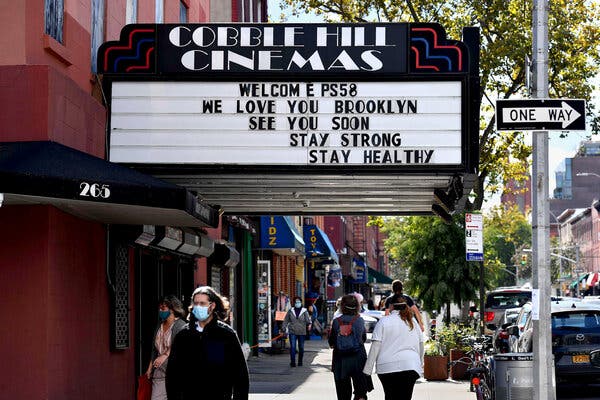
Movie theaters in New York City will be permitted to open for the first time in nearly a year on March 5, Gov. Andrew M. Cuomo announced at a news conference on Monday.
The theaters will only be permitted to operate at 25 percent of their maximum capacity, with no more than 50 people per screening. Masks will be mandatory, and theaters must assign seating to patrons to guarantee proper social distancing. Tests for the virus will not be required.
Movie theaters were permitted to open with similar limits in the rest of the state in late October, but New York City was excluded out of concern that the city’s density would hasten the spread of the virus there.
The virus has battered the movie theater industry. In October, the owner of Regal Cinemas, the second-largest cinema chain in the United States, temporarily closed its theaters as Hollywood studios kept postponing releases and cautious audiences were hesitant to return to screenings. AMC Entertainment, the world’s largest movie theater chain, has increasingly edged toward bankruptcy.
The economic effects of the pandemic have been particularly felt in New York City, one of the biggest movie markets in the United States. Theaters in the city closed in mid-March, as the region was becoming an epicenter of the pandemic in the country.
While other indoor businesses, including restaurants, bowling alleys and museums, had been allowed to open in the city, Mr. Cuomo had kept movie theaters closed out of concern that people would be sitting indoors in poorly ventilated theaters for hours, risking the further spread of the virus.
Theaters that open will be required to have enhanced air filtration systems. Public health experts say when considering indoor gatherings, the quality of ventilation is key because the virus is known to spread more easily indoors.
Mr. Cuomo’s announcement was applauded by the National Association of Theater Owners.
“New York City is a major market for moviegoing in the U.S.; reopening there gives confidence to film distributors in setting and holding their theatrical release dates, and is an important step in the recovery of the entire industry,” the association said in a statement.
In a statement, AMC’s chief executive, Adam Aron, said the company would open all 13 of its New York City theaters on March 5.
The move came just days after Mr. Cuomo said that indoor family entertainment centers and places of amusement could reopen statewide, at 25 percent maximum capacity, on March 26. Outdoor amusement parks will be allowed to open with a 33 percent capacity limit in April.
The governor also said that the state was working on guidelines to allow pool and billiards halls to reopen after the state lost a lawsuit from pool hall operators. Those establishments will be allowed to reopen at 50 percent capacity with masks required, he said.
Cases in New York remain high despite climbing down from their January peak. Over the last seven days, the state averaged 38 cases per 100,000 residents each day, as of Sunday. That is the second-highest rate per capita of new cases in the last week in the country, after South Carolina.
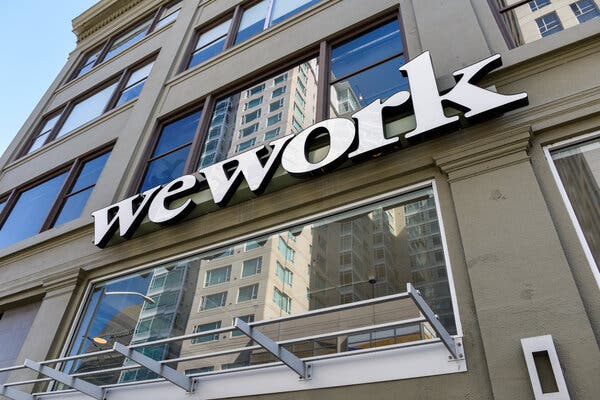
Adam Neumann, the flamboyant co-founder of WeWork, and SoftBank, the Japanese conglomerate that rescued the co-working company in 2019, have in recent weeks made significant headway toward settling their drawn-out legal dispute, according to two people with knowledge of the matter. That battle has stalled SoftBank’s efforts to take WeWork public.
As part of its multibillion-dollar bailout of WeWork, SoftBank offered to pay $3 billion for stock owned by Mr. Neumann and other shareholders. Several months later, after the coronavirus pandemic had emptied WeWork’s locations, SoftBank withdrew the offer. Mr. Neumann then sued SoftBank for breach of contract.
SoftBank was already a big investor in WeWork when it withdrew plans for an initial public offering in 2019. Now, SoftBank has plans to combine WeWork with a publicly traded special-purpose acquisition company, a type of deal that has recently become a popular way of quickly bringing private companies public. The legal dispute between Mr. Neumann and SoftBank is a threat to such a deal because it leaves unresolved the question of how much control SoftBank has over WeWork.
The settlement talks, which were reported earlier by The Wall Street Journal, could still fall apart, the two people said. Under the terms being discussed, SoftBank would buy half the number of shares that it had originally agreed to, one of the people said. As a result, it would pay $1.5 billion, not $3 billion. Mr. Neumann would get nearly $500 million instead of almost $1 billion, but he would retain more of his shares.
Under Mr. Neumann, WeWork grew at a breakneck pace and was using up so much cash that it was close to bankruptcy before SoftBank stepped in. Under the management team SoftBank installed, WeWork has tried to cut costs by slowing its growth and negotiating deals with the landlords it rents space from.






